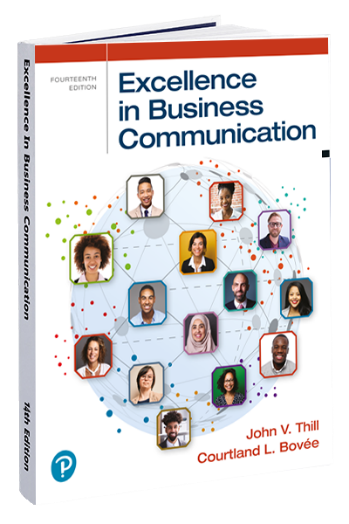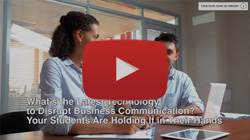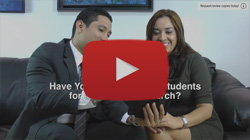
Discover common cognitive biases that affect business communication instructors, and learn strategies for recognizing and mitigating their influence.
Breaking Free from Bias: Avoiding the 25 Cognitive Traps in Teaching Business Communication
Teaching business communication is a complex endeavor that requires constant decision-making, from course design and material selection to student assessment and feedback. Even the most experienced educators are susceptible to cognitive biases—systematic patterns of deviation from rational thinking that can distort judgment and decision-making. These biases can significantly influence how instructors interpret student behavior, evaluate their own effectiveness, and choose instructional strategies.
While some biases might occasionally lead to positive outcomes, many can undermine the teaching process, resulting in disengaged students, ineffective teaching methods, and suboptimal course outcomes. Understanding these biases is crucial for recognizing their influence and mitigating their impact. By becoming more aware of common cognitive biases, instructors can make more objective, data-driven decisions that enhance the learning experience and improve student success.
This article provides an in-depth exploration of 25 common cognitive biases that may affect decision-making in teaching business communication. Each bias is explained in detail, with real-world examples of how it has led to negative outcomes in the classroom, along with strategies instructors can employ to mitigate these effects and ensure that their choices and actions are grounded in objective analysis rather than flawed reasoning.
1. Confirmation Bias
Definition: The tendency to seek out, interpret, favor, and recall information in a way that confirms or supports one's prior beliefs or values.
Influence: Instructors may unconsciously seek out or favor information that confirms their pre-existing beliefs about teaching methods, student capabilities, or course content, while ignoring or dismissing contradictory evidence.
Example: An instructor who believes that traditional lecture-style teaching is the most effective method might focus on positive feedback from students who prefer this approach, while overlooking or rationalizing away negative feedback from students who struggle with this style of learning.
Negative Outcome: This bias can lead to a stagnation in teaching methods, as the instructor fails to adapt to changing student needs or incorporate new, potentially more effective teaching strategies.
Mitigation Strategy:
Actively seek out and consider contradictory evidence to your teaching methods.
Encourage peer reviews of your teaching strategies.
Regularly survey students for comprehensive feedback, including anonymous surveys to encourage honest responses.
Implement a structured decision-making process that requires considering alternative viewpoints before reaching a conclusion.
2. Anchoring Bias
Definition: The tendency to rely too heavily on the first piece of information encountered when making decisions.
Influence: Initial information or first impressions can excessively influence decisions throughout the course, such as the first set of exam results or the first weeks of class interactions.
Example: A student who performs exceptionally well on the first assignment might be viewed as a high achiever for the entire semester, even if their performance declines in subsequent assignments. Conversely, a student who struggles initially might be labeled as weak despite later improvement.
Negative Outcome: This bias can lead to unfair treatment of students, missed opportunities for intervention, and inaccurate assessments of student progress and capabilities.
Mitigation Strategy:
Implement a system of continuous assessment that gives equal weight to performance throughout the semester.
Regularly reassess student performance and adjust your perceptions accordingly.
Use blind grading techniques when possible to avoid being influenced by student identities.
Create opportunities for students to demonstrate growth and improvement throughout the course.
3. Recency Bias
Definition: The tendency to place more importance on the most recent information, while neglecting older, potentially more relevant data.
Influence: Recent events or information disproportionately influence decisions over older, but potentially more relevant, data. This can affect how instructors evaluate student performance, teaching methods, or course content.
Example: After one particularly engaging lesson using a new interactive technology, an instructor might overestimate the effectiveness of this approach and decide to incorporate it extensively into future lessons, ignoring the overall trend of student engagement throughout the semester.
Negative Outcome: This bias can lead to hasty changes in teaching strategies based on short-term results, potentially overlooking long-term trends or the overall effectiveness of established methods.
Mitigation Strategy:
Maintain detailed records of student performance and engagement throughout the semester.
Regularly review past class data and performance to assess teaching methods more holistically.
Implement a system of rolling averages when evaluating the effectiveness of teaching strategies.
Seek feedback from students about their learning experience over time, not just after individual lessons
4. Overconfidence Bias
Definition: The tendency to overestimate one's own abilities, knowledge, or chances of success.
Influence: Instructors may overestimate their ability to predict student needs, course outcomes, or the effectiveness of their teaching methods, leading to poor decisions and inadequate preparation.
Example: An experienced instructor might believe they can accurately predict which topics students will struggle with based on past experiences. This overconfidence could lead them to allocate insufficient time for certain topics, assuming students will grasp them quickly, when in reality, the current cohort might need more extensive explanation and practice.
Negative Outcome: This bias can result in inadequate preparation, unrealistic expectations, and a failure to adapt to the unique needs of each student cohort.
Mitigation Strategy:
Regularly seek feedback from colleagues and students to challenge your assumptions.
Implement pre-assessments to gauge student knowledge and needs before making decisions about course pacing and content emphasis.
Maintain a growth mindset, acknowledging that there's always room for improvement in teaching methods.
Track and analyze data on student performance and engagement to inform decision-making, rather than relying solely on intuition or past experiences.
5. Status Quo Bias
Definition: The tendency to prefer things to stay the same, resisting change even when better alternatives are available.
Influence: This bias can lead instructors to stick with familiar teaching methods, course structures, or materials, even when evidence suggests that changes could improve student learning outcomes.
Example: An instructor continues to use traditional lectures and multiple-choice exams year after year, despite research and student feedback supporting more interactive, project-based learning and diverse assessment methods.
Negative Outcome: Students may miss out on more effective learning experiences, and the course may become outdated or less relevant to current industry needs.
Mitigation Strategy:
Regularly review and assess teaching practices, remaining open to new approaches and innovations in education.
Set aside time each semester to research and consider implementing at least one new teaching technique or technology.
Seek out professional development opportunities to stay current with best practices in business communication education.
Create a system for systematically evaluating and potentially incorporating student suggestions for course improvements.
6. Sunk Cost Fallacy
Definition: The tendency to continue investing time, effort, or resources into something because of past investments, even when it's no longer rational to do so.
Influence: Instructors may persist with ineffective teaching strategies, outdated materials, or failing projects simply because they've already invested significant time or resources into them.
Example: An instructor spends months developing a complex online simulation for teaching negotiation skills. Despite consistent student feedback that the simulation is confusing and doesn't effectively teach the intended skills, the instructor continues to use it semester after semester, rationalizing that the time invested in its development shouldn't go to waste.
Negative Outcome: Students may struggle with suboptimal learning experiences, while the instructor misses opportunities to implement more effective teaching methods.

Embrace data-driven teaching: Prioritize future success over past investments, fostering a culture of innovation and adaptation.
Mitigation Strategy:
Regularly evaluate the effectiveness of teaching materials and methods based on current outcomes, not past investments.
Set clear criteria for success before implementing new teaching strategies, and be willing to abandon them if these criteria aren't met.
Frame the decision to change or abandon a teaching method as an investment in future success, rather than a loss of past effort.
Encourage a departmental culture that values innovation and adaptability over tradition.
7. Bandwagon Effect
Definition: The tendency to adopt certain behaviors, styles, or attitudes simply because others are doing so.
Influence: Instructors may adopt popular trends in teaching without critically evaluating whether they are suitable for their own context, student needs, or learning objectives.
Example: An instructor decides to implement a flipped classroom approach because it's gaining popularity in educational circles, without considering whether it's appropriate for their specific course content or student demographics.
Negative Outcome: The adoption of ill-suited teaching methods can lead to decreased student engagement, confusion, and potentially poorer learning outcomes.
Mitigation Strategy:
Critically evaluate new teaching trends based on evidence and their potential fit with your specific course objectives and student needs.
Pilot new methods on a small scale before full implementation, gathering data on their effectiveness.
Seek out case studies or research on the implementation of new teaching methods in contexts similar to your own.
Encourage open discussions among faculty about the pros and cons of new teaching trends, rather than blindly following what's popular.
8. Framing Effect
Definition: The cognitive bias where people make decisions based on how information is presented (framed) rather than on the information itself.
Influence: The way course policies, assignments, or feedback are framed can significantly impact how students perceive and engage with the material, potentially leading to unintended consequences.
Example: An instructor frames a challenging group project as an opportunity for intensive skill development rather than a difficult assignment. This positive framing might increase student motivation and engagement, even though the actual work involved remains the same.
Negative Outcome: While positive framing can be beneficial, overuse or misuse of framing can lead to unrealistic expectations or misunderstandings about course requirements and outcomes.
Mitigation Strategy:
Be conscious of how you frame course elements and strive for balanced, accurate representations.
Present both the challenges and benefits of course activities to give students a complete picture.
Use consistent framing across all course communications to avoid confusion.
Regularly seek student feedback on their perceptions of course elements to ensure your framing aligns with their experiences.
9. Availability Heuristic
Definition: The tendency to overestimate the likelihood of events with greater availability in memory, which can be influenced by how recent the memories are or how unusual or emotionally charged they may be.
Influence: Recent or memorable events in the classroom can disproportionately influence an instructor's decision-making, even if these events are outliers rather than representative of the norm.
Example: After a particularly disruptive incident involving a student using their phone in class, an instructor implements a strict no-phone policy, despite this being the first such incident in years of teaching.
Negative Outcome: This can lead to overreactions to isolated incidents, potentially resulting in policies or teaching adjustments that don't address actual trends or needs in the classroom.
Mitigation Strategy:
Keep detailed records of classroom incidents and student performance to reference when making decisions.
Implement a cooling off period before making significant changes in response to memorable events.
Seek input from colleagues or mentors to gain perspective on the significance of recent events.
Use data analytics tools to identify true trends in student behavior or performance, rather than relying on memory alone.
10. Hindsight Bias
Definition: The tendency to perceive past events as having been more predictable than they actually were.
Influence: After an outcome occurs, instructors may believe they predicted it all along, reducing their willingness to improve or adapt their teaching methods.
Example: When a student fails a course, an instructor might claim they knew all along that the student would struggle, even though they didn't take any preventative actions during the semester.
Negative Outcome: This bias can lead to a false sense of predictive ability, potentially causing instructors to overlook opportunities for early intervention or improvement in their teaching methods.
Mitigation Strategy:
Keep detailed notes on predictions and expectations at the beginning of each semester or unit.
Regularly reflect on past teaching experiences, focusing on what was genuinely unexpected or surprising.
Implement a system of early assessments and check-ins to identify struggling students before issues become severe.
Foster a growth mindset that views unexpected outcomes as opportunities for learning and improvement rather than confirmation of predictions.
11. Halo Effect
Definition: The tendency for an impression created in one area to influence opinion in another area.
Influence: A positive impression of a student in one area (e.g., class participation) might unduly influence an instructor's judgment in unrelated areas (e.g., written assignments).
Example: A student who is exceptionally articulate and engaged during class discussions consistently receives high grades on written assignments, even when the quality of their writing doesn't merit such high scores.
Negative Outcome: This bias can lead to unfair grading practices and missed opportunities to help students improve in areas where they genuinely struggle.
Mitigation Strategy:
Use rubrics and objective criteria for assessments to minimize subjective influences.
Implement blind grading practices when possible, especially for major assignments.
Regularly calibrate grading practices with colleagues to ensure consistency and fairness.
Provide specific, criterion-referenced feedback on assignments to justify grades beyond general impressions.
12. Attribution Bias
Definition: The tendency to attribute one's own success to internal factors and failures to external factors, while doing the opposite for others.
Influence: Instructors may attribute student success or failure to internal factors (e.g., effort, ability) while ignoring external factors (e.g., personal challenges, systemic barriers).

Attribution bias leads educators to misjudge student performance causes, overlooking external factors affecting outcomes.
Example: When a typically high-performing student submits a subpar assignment, the instructor assumes the student didn't put in enough effort, without considering potential external factors like health issues or family emergencies.
Negative Outcome: This bias can lead to unfair judgments of students, missed opportunities for support, and a lack of recognition for systemic issues affecting student performance.
Mitigation Strategy:
Implement regular check-ins with students to understand their individual circumstances and challenges.
Create an open and supportive classroom environment where students feel comfortable sharing external factors affecting their performance.
Consider multiple possible explanations for changes in student performance before drawing conclusions.
Provide opportunities for students to reflect on and explain their own performance, giving insight into factors you might not have considered.
13. Groupthink
Definition: The practice of thinking or making decisions as a group in a way that discourages creativity or individual responsibility.
Influence: In departmental or team teaching settings, the desire for harmony or conformity in the group can result in irrational or dysfunctional decision-making outcomes.
Example: A department continues to use an outdated textbook because no one wants to challenge the senior professor who originally selected it, despite student feedback indicating the material is no longer relevant.
Negative Outcome: This can lead to stagnation in curriculum development, missed opportunities for innovation, and a failure to address evolving student needs.
Mitigation Strategy:
Encourage open discussion and debate in departmental meetings, creating a culture where diverse opinions are valued.
Implement structured decision-making processes that require consideration of alternative viewpoints.
Assign a devil's advocate role in group discussions to ensure all decisions are thoroughly questioned.
Seek external perspectives or evaluations to challenge group assumptions.
14. Illusory Correlation
Definition: The tendency to perceive a relationship between variables even when no such relationship exists.
Influence: Instructors may falsely perceive relationships between unrelated aspects of student performance or behavior, leading to misguided teaching strategies or assessments.
Example: An instructor notices that students who sit in the front of the classroom tend to get better grades and concludes that seating location causes improved performance, without considering other factors like motivation or preparedness.
Negative Outcome: This can lead to the implementation of ineffective teaching strategies or unfair policies based on false assumptions about what drives student success.
Mitigation Strategy:
Use data analysis techniques to identify actual correlations, avoiding reliance on anecdotal observations.
Seek peer review or external analysis of perceived relationships between variables in your classroom.
Conduct controlled experiments or studies to test hypotheses about relationships between variables.
Regularly challenge your own assumptions about what factors contribute to student success.
15. Self-Serving Bias
Definition: The tendency to attribute positive events to one's own character but attribute negative events to external factors.
Influence: Instructors may take credit for student successes while blaming failures on external factors or the students themselves.
Example: When a class performs exceptionally well on an exam, the instructor attributes it to their effective teaching methods. However, when the same class performs poorly on another assessment, the instructor blames it on students' lack of preparation or effort.
Negative Outcome: This bias can prevent instructors from critically examining and improving their teaching methods, as well as recognizing and addressing systemic issues affecting student performance.
Mitigation Strategy:
Regularly solicit and seriously consider student feedback on all aspects of the course, including teaching effectiveness.
Implement peer observation and feedback systems to gain objective insights into teaching
16. Optimism Bias
Definition: The tendency to overestimate the likelihood of positive outcomes and underestimate the probability of negative ones.
Influence: Instructors may overestimate student engagement, understanding, or success rates, leading to inadequate preparation or support.
Example: An instructor introduces a complex new software tool for a project, believing all students will easily adapt to it. They underestimate the learning curve and the time needed for students to become proficient, leading to frustration and subpar project outcomes.
Negative Outcome: This can result in unrealistic expectations, inadequate scaffolding for learning, and missed opportunities to provide necessary support to students.
Mitigation Strategy:
Conduct pre-assessments to gauge students' actual skill levels before introducing new concepts or tools.
Plan for potential challenges by providing additional resources and support from the outset.
Regularly check in with students to gauge their understanding and progress.
Set realistic, data-driven goals for student achievement and course outcomes.
17. Dunning-Kruger Effect
Definition: A cognitive bias in which people with limited knowledge or expertise in a specific domain overestimate their own knowledge or ability.
Influence: Instructors with limited knowledge in a specific area of business communication may overestimate their competence in teaching it, leading to subpar instruction.
Example: An instructor with a traditional marketing background confidently teaches a unit on digital marketing strategies without recognizing the depth of their knowledge gap in current best practices and tools.
Negative Outcome: Students receive outdated or incorrect information, potentially harming their future professional performance and the instructor's credibility.
Mitigation Strategy:
Regularly pursue professional development, especially in rapidly evolving areas of business communication.
Collaborate with colleagues who have complementary expertise.
Stay humble and open to learning from students who may have relevant practical experience.
Regularly update course content based on current industry standards and practices.
18. Survivorship Bias
Definition: The logical error of concentrating on people or things that survived a process while overlooking those that did not, typically because of their lack of visibility.
Influence: Focusing on successful students or teaching methods while ignoring those who failed or dropped out, leading to skewed perceptions of effectiveness.
Example: An instructor points to several highly successful alumni as proof of their teaching effectiveness, ignoring the many students who struggled in the course or changed majors as a result.
Negative Outcome: This can lead to a false sense of teaching efficacy and a failure to address issues that may be causing some students to struggle or disengage.
Mitigation Strategy:
Track and analyze data on all students, including those who struggle or drop out.
Conduct exit interviews or surveys with students who withdraw from the course.
Regularly review and reflect on less successful teaching experiences.
Seek feedback from a diverse range of students, not just high achievers.
19. Negativity Bias
Definition: The tendency to give more weight to negative experiences or information compared to positive ones.
Influence: Instructors may focus disproportionately on negative feedback or poor performance, overlooking positive aspects and successes.
Example: After receiving course evaluations, an instructor fixates on a few negative comments, despite the majority being positive, leading to unnecessary and potentially counterproductive changes to a generally effective course.
Negative Outcome: This can result in lowered confidence, unnecessary changes to effective practices, and a failure to recognize and build upon strengths.
Mitigation Strategy:
Implement a structured review process that gives equal weight to positive and negative feedback.
Keep a success journal to document positive outcomes and student achievements.
Use data-driven approaches to evaluate overall course effectiveness, rather than relying on emotional responses to feedback.
Practice mindfulness techniques to maintain a balanced perspective on teaching experiences.
20. Halo/Horn Effect
Definition: The tendency for an impression created in one area to influence opinion in another area.
Influence: An instructor's overall impression of a student (positive or negative) influences their perception of the student's work in unrelated areas.

The halo effect influences grading as overall impressions of students affect evaluations in unrelated areas.
Example: A student known for being punctual and respectful receives higher grades on assignments that don't meet the standard, while a student with disciplinary issues is graded more harshly despite producing quality work.
Negative Outcome: This can lead to unfair grading practices, missed opportunities to address genuine areas of concern, and failure to recognize areas of strength in students who may struggle in other aspects.
Mitigation Strategy:
Use rubrics and objective criteria for all assessments to minimize subjective influences.
Implement blind grading practices when possible.
Regularly calibrate grading practices with colleagues to ensure consistency and fairness.
Consciously separate behavior management issues from academic performance in evaluations.
21. Action Bias
Definition: The tendency to favor action over inaction, even when action is not necessary or beneficial.
Influence: Feeling the need to do something in response to a situation, even if doing nothing or waiting might be the better choice.
Example: After a class performs poorly on an exam, an instructor immediately implements sweeping changes to the curriculum and teaching methods without first analyzing the root cause of the poor performance.
Negative Outcome: Hasty actions can lead to unnecessary disruptions, confusion among students, and potentially exacerbate the original issue.
Mitigation Strategy:
Implement a pause and reflect period before making significant changes in response to challenges.
Develop a structured decision-making process that includes gathering data and considering multiple options, including inaction.
Seek input from colleagues or mentors before implementing major changes.
Set predefined criteria for when action is necessary versus when monitoring the situation is more appropriate.
22. Pessimism Bias
Definition: The tendency to overestimate the likelihood of negative outcomes.
Influence: Expecting the worst outcomes, leading to overly cautious or defensive decisions in course design and instruction.
Example: An instructor avoids incorporating group projects into the curriculum, assuming they will inevitably lead to conflict and unequal workload distribution among students.
Negative Outcome: This can result in missed opportunities for valuable learning experiences and skill development for students.
Mitigation Strategy:
Balance risk assessment with consideration of potential benefits when evaluating new teaching methods or course components.
Pilot new approaches on a small scale to gather data on actual outcomes rather than relying on pessimistic assumptions.
Seek out success stories and best practices from colleagues who have implemented similar initiatives.
Develop contingency plans to address potential challenges, allowing for more confident implementation of new ideas.
23. Base Rate Fallacy
Definition: The tendency to ignore general statistical information (base rates) in favor of specific, but potentially irrelevant, information.
Influence: Instructors might focus on individual cases or anecdotes rather than overall trends when making decisions about teaching methods or student assessment.
Example: An instructor decides to eliminate a particular assignment because a few vocal students complained about its difficulty, ignoring data showing that the majority of students performed well and found it valuable.
Negative Outcome: This can lead to decisions that cater to outliers rather than benefiting the majority of students, potentially undermining the overall effectiveness of the course.
Mitigation Strategy:
Regularly collect and analyze comprehensive data on student performance and feedback.
Use statistical methods to identify true trends and patterns in student outcomes.
Consider both individual cases and overall trends when making decisions, giving appropriate weight to each.
Educate students on the importance of representative feedback and encourage broader participation in course evaluations.
24. Endowment Effect
Definition: The tendency for people to overvalue something simply because they own it.
Influence: Instructors may overvalue their own ideas, assignments, or teaching materials simply because they created them or have used them for a long time.
Example: An instructor continues to use an outdated case study in their business communication course because they developed it years ago, despite the availability of more relevant and engaging contemporary examples.
Negative Outcome: This can result in the perpetuation of outdated or ineffective teaching materials and methods, potentially diminishing the relevance and effectiveness of the course.
Mitigation Strategy:
Regularly review and update course materials based on current industry trends and student feedback.
Collaborate with colleagues to co-develop or peer-review course materials, bringing in fresh perspectives.
Set a regular schedule for retiring and replacing a percentage of course materials each year.
Actively seek out and incorporate new, externally developed resources and case studies to complement existing materials.
25. Escalation of Commitment
Definition: The tendency to continue investing time, effort, or resources into a failing course of action due to prior investments.
Influence: Instructors might persist with ineffective teaching strategies or course designs simply because they've already invested significant time or effort into developing them.
Example: Despite consistent negative feedback and poor learning outcomes, an instructor continues to use a complex online simulation they spent months developing, rationalizing that abandoning it would be a waste of their initial effort.
Negative Outcome: This can lead to the perpetuation of ineffective teaching methods, wasted time and resources, and suboptimal learning experiences for students.
Mitigation Strategy:
Set clear, measurable objectives for new teaching initiatives before implementation.
Regularly evaluate the effectiveness of teaching methods against these objectives.
Create a culture that values adaptation and improvement over consistency for its own sake.
Frame the decision to change or abandon an ineffective method as an investment in future success rather than a loss of past effort.
Key Takeaways
Recognizing and mitigating these cognitive biases is crucial for effective teaching in business communication. By being aware of these tendencies, instructors can make more objective, data-driven decisions that enhance the learning experience and improve student outcomes. Regular self-reflection, peer collaboration, and a commitment to continuous improvement are key strategies in overcoming these biases.
Implementing systems for gathering and analyzing comprehensive data on student performance and feedback can provide a more objective basis for decision-making. Additionally, creating a departmental culture that encourages open discussion, values diverse perspectives, and supports innovation can help counteract the negative effects of many of these biases.
Ultimately, the goal is to create a learning environment that is responsive to student needs, aligned with current industry practices, and continuously evolving to provide the best possible education in business communication. By actively working to recognize and mitigate cognitive biases, instructors can enhance their teaching effectiveness, improve student engagement and learning outcomes, and better prepare students for success in their future careers.
Mitigating Cognitive Biases in Business Communication: Why Excellence in Business Communication Is the Ideal Guide for Instructors

Excellence in Business Communication is the ideal text for instructors aiming to avoid cognitive biases in teaching because it is designed with several key features that foster objective, data-driven decision-making and reflective practices. Here are the reasons why this textbook stands out for addressing cognitive biases:
1. Comprehensive Framework for Reflection: The textbook includes various self-assessment tools, peer evaluations, and reflection exercises that encourage instructors and students alike to critically analyze their communication strategies and methods. These tools help instructors mitigate biases such as confirmation bias by encouraging them to seek out and engage with contradictory viewpoints and diverse feedback.
2. Diverse Assessment Methods: Excellence in Business Communication provides a variety of assessment formats, including case studies, simulations, role-plays, and projects, which minimize the risk of anchoring bias and recency bias. These diverse assessments prevent over-reliance on initial or most recent performance and promote continuous, holistic evaluation of students' progress.
3. Emphasis on Evidence-Based Practices: The text aligns with current research in business communication and pedagogical strategies, encouraging instructors to adopt methods supported by data rather than following trends due to bandwagon effect or relying on outdated methods driven by status quo bias. This evidence-based approach ensures that instructors critically evaluate new strategies and avoid making decisions based on popularity or tradition alone.
4. Growth-Oriented Feedback Loops: The textbook highlights the importance of regular feedback loops that focus on growth and improvement. This feature helps counteract overconfidence bias and the sunk cost fallacy by encouraging instructors to continuously refine their methods and abandon ineffective strategies, even if they have invested significant time and effort in them.
5. Tools for Inclusive Decision-Making: By integrating peer review, group discussions, and collaborative projects, the text helps instructors avoid biases such as groupthink and attribution bias. These tools promote diverse perspectives and encourage a deeper understanding of students' challenges and external factors, leading to more informed and equitable teaching practices.
6. Objective Grading Tools: The textbook's use of rubrics and clear, structured evaluation criteria minimizes the halo effect and self-serving bias, ensuring that grading is based on objective performance metrics rather than subjective impressions.
By providing practical strategies, evidence-based content, and a variety of assessment tools, Excellence in Business Communication equips instructors with the resources needed to recognize and mitigate cognitive biases, leading to more effective and equitable teaching outcomes.
References
Aronson, E., Wilson, T. D., & Akert, R. M. (2010). Social Psychology (7th ed.). Pearson.
Kahneman, D. (2011). Thinking, Fast and Slow. Farrar, Straus and Giroux.
Kruger, J., & Dunning, D. (1999). "Unskilled and unaware of it: How difficulties in recognizing one's own incompetence lead to inflated self-assessments."Journal of Personality and Social Psychology, 77(6), 1121-1134.
Nickerson, R. S. (1998). "Confirmation bias: A ubiquitous phenomenon in many guises." Review of General Psychology, 2(2), 175-220.
Tversky, A., & Kahneman, D. (1974). "Judgment under Uncertainty: Heuristics and Biases." Science, 185(4157), 1124-1131.
Wason, P. C. (1960). "On the failure to eliminate hypotheses in a conceptual task." Quarterly Journal of Experimental Psychology, 12(3), 129-140.



